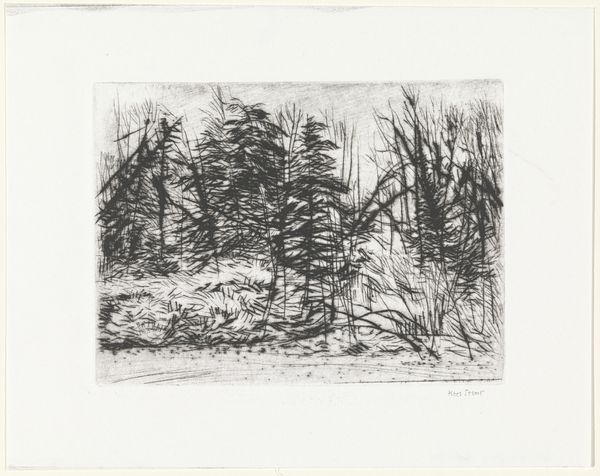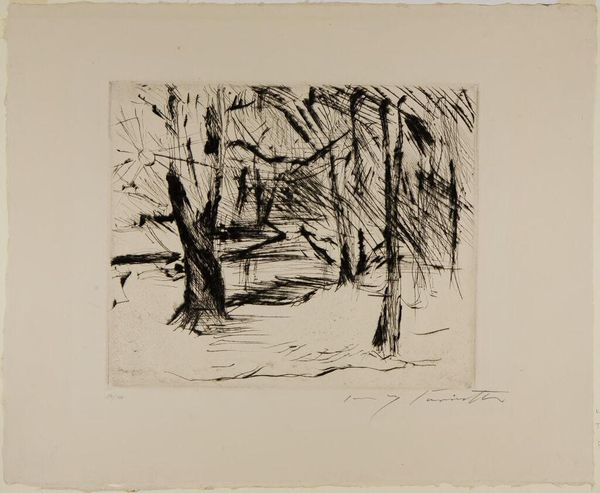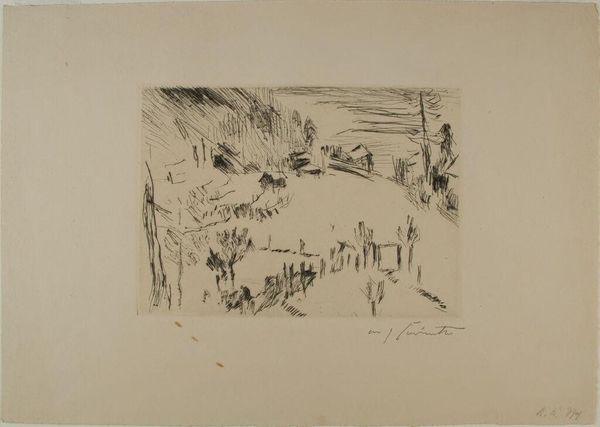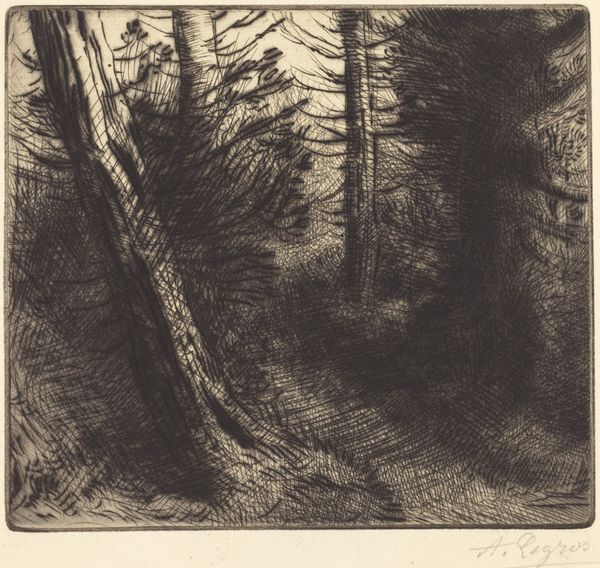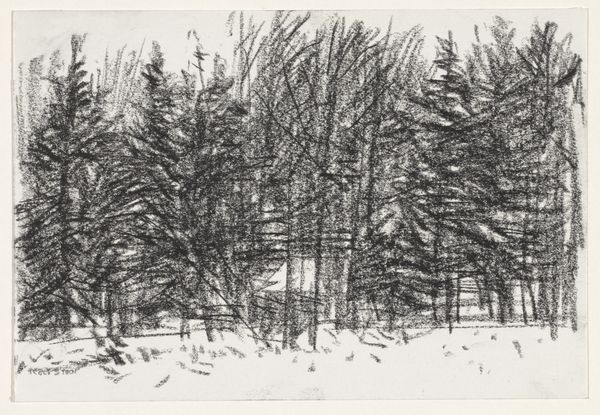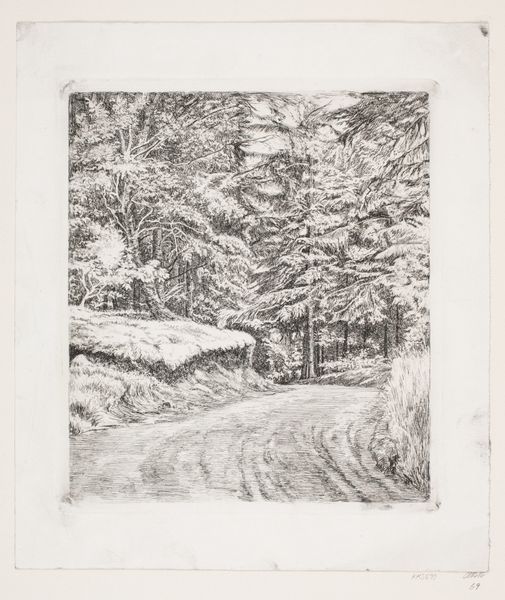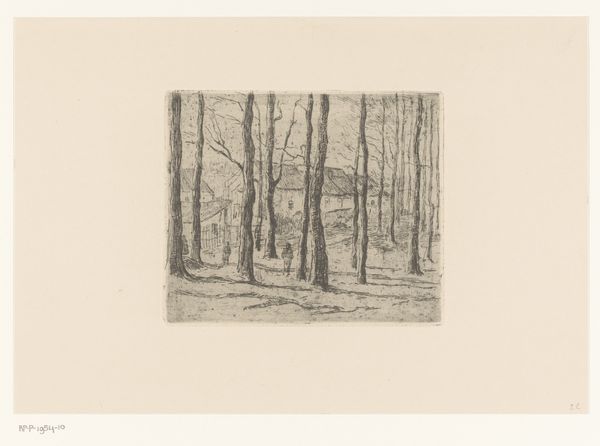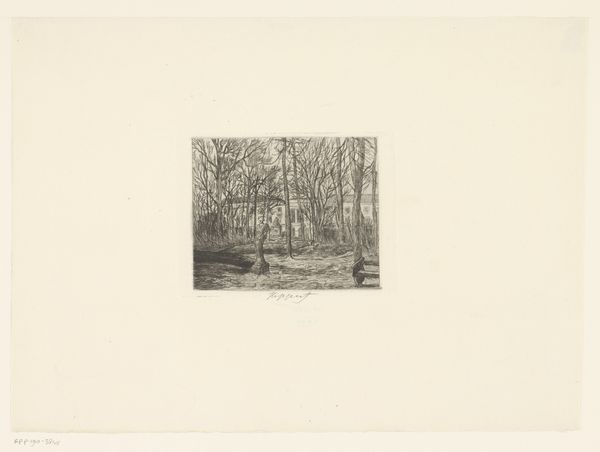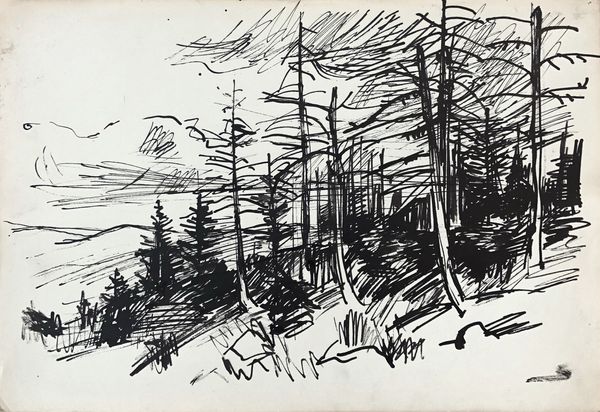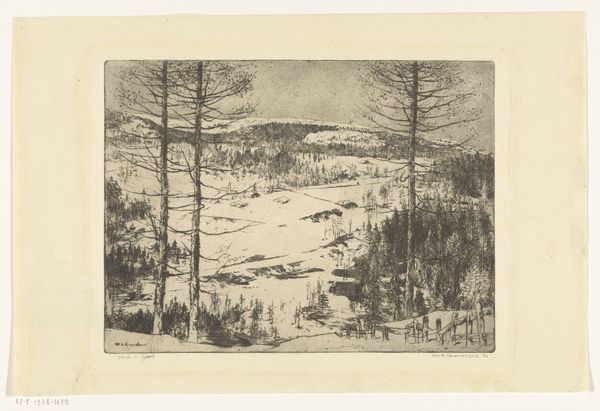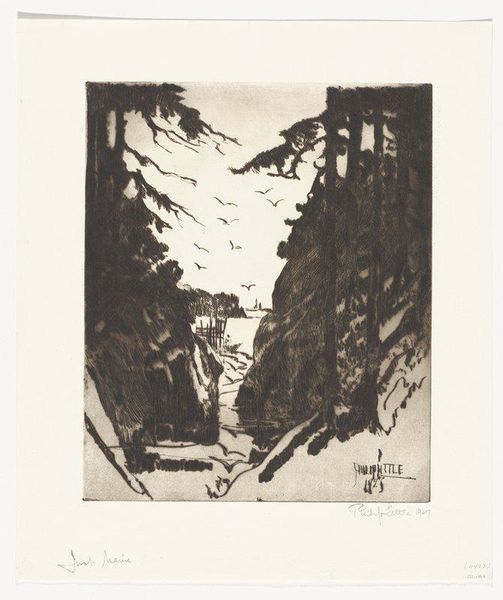
The Valley, from Early Spring in the Mountains Possibly 1922
0:00
0:00
Dimensions: 321 × 429 mm (plate); 459 × 595 mm (sheet)
Copyright: Public Domain
Curator: Lovis Corinth's lithograph, "The Valley, from Early Spring in the Mountains," possibly created in 1922, presents us with a stark landscape rendered in monochrome. Editor: The immediacy of the mark-making strikes me first. The scene feels almost violently rendered, not what one expects from "early spring". Curator: Indeed. The etching technique employed lends itself to the graphic quality, the stark contrasts emphasizing the scene’s inherent drama. Note the deliberate use of light and shadow. The interplay creates a depth that belies the apparent simplicity. Editor: I'm particularly interested in the labor evident in the medium. Look at how the varying pressures used when etching produce the emotional effect of harsh weather conditions. Was the artist perhaps commenting on material constraints when choosing these rapid processes? Curator: Perhaps, or one might consider the expressionistic elements dominating this period, where subjective experience transcends mimetic representation. The forest isn’t just depicted; it’s felt. Consider how the trees in the foreground seem almost to claw at the sky. Editor: The composition places the viewer on unstable ground, observing bare materials arranged according to human intentions and interventions—paper, ink, and artistic license! What can these textures reveal about 1920s German culture's attitude towards natural landscapes and resource extraction techniques? Curator: We can examine the underlying symbolic content. Consider the motif of the valley—a liminal space between heights, suggestive perhaps of transition and uncertainty, reflecting the socio-political milieu of Weimar Germany. Editor: The materiality itself adds layers, then, to understanding Corinth’s Valley. How the act of etching and printing becomes a mode of inquiry into broader concerns regarding the consumption of landscapes, for instance. Curator: A compelling thought. Ultimately, it showcases Corinth's profound engagement with not only the observed world but also its internal emotional landscapes. Editor: It certainly invites one to look beyond just the scene itself and into the conditions that facilitated the artwork's very creation and circulation.
Comments
No comments
Be the first to comment and join the conversation on the ultimate creative platform.

